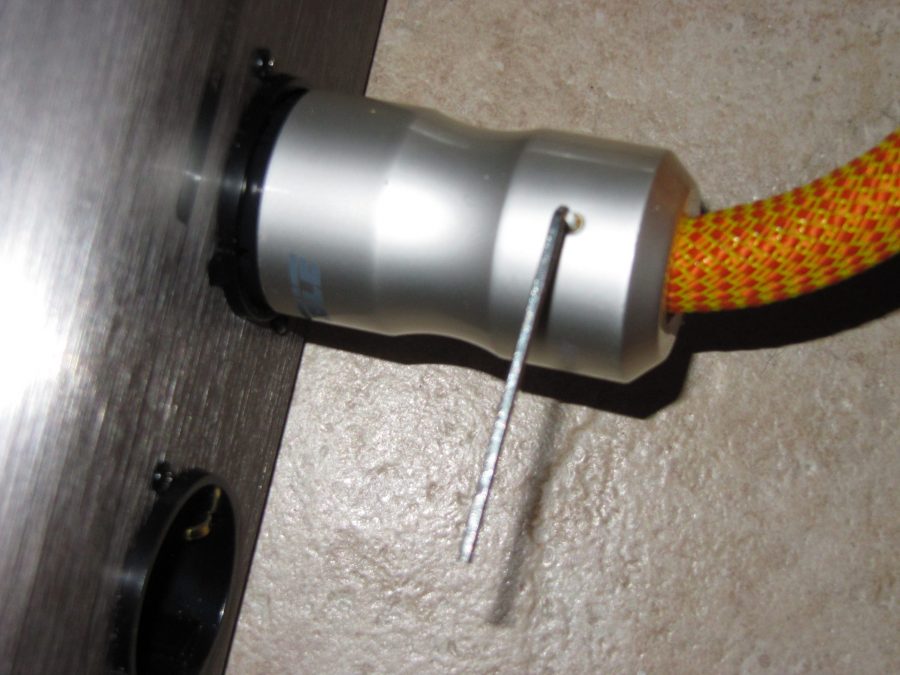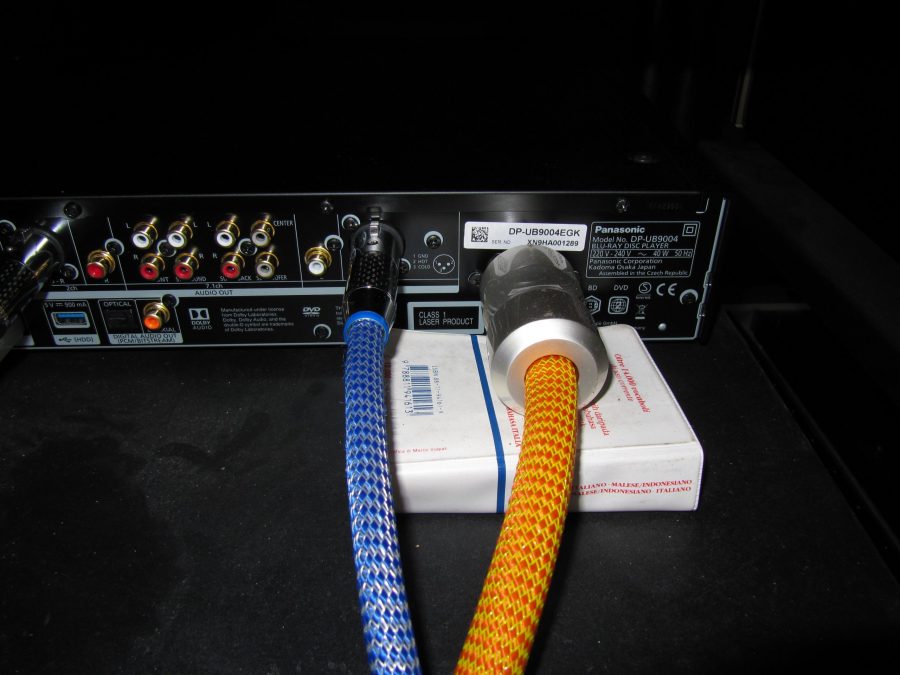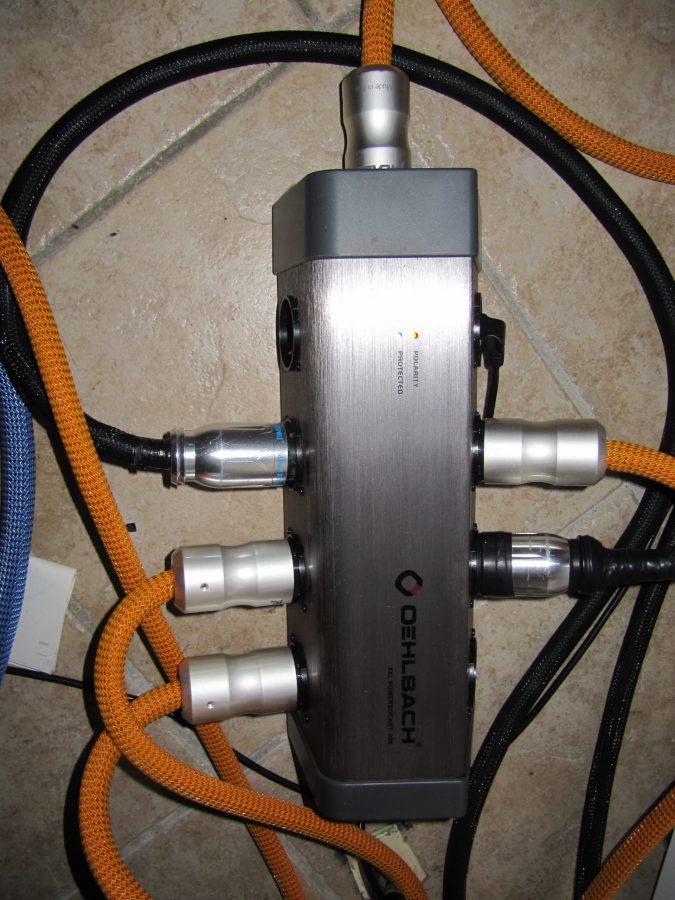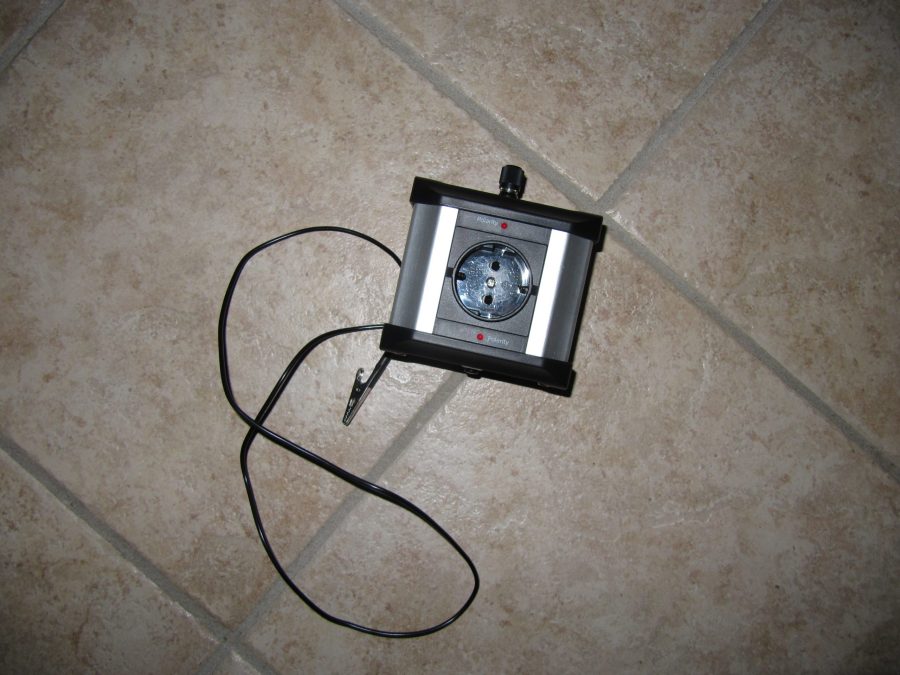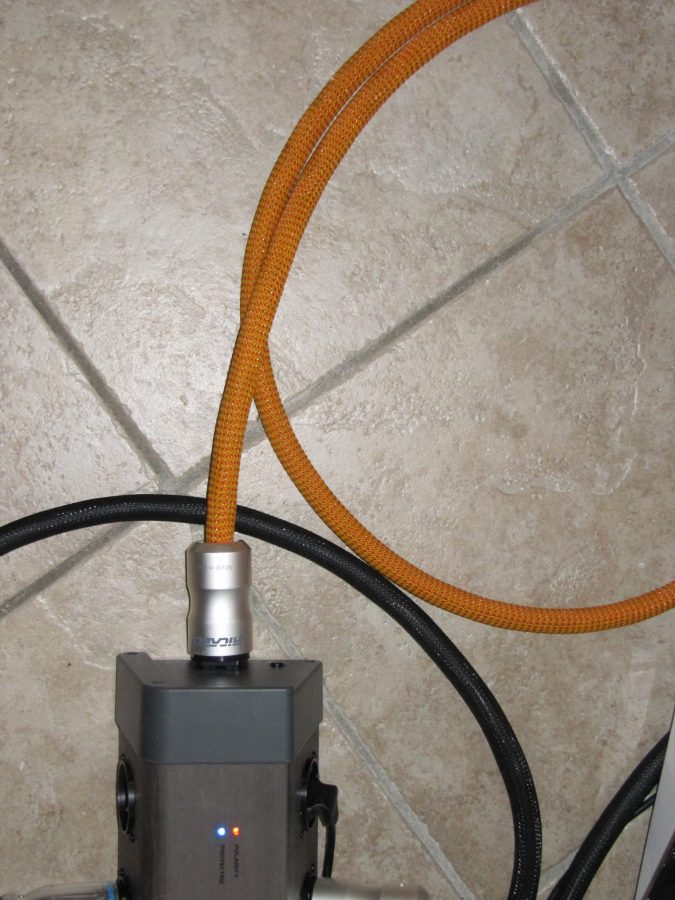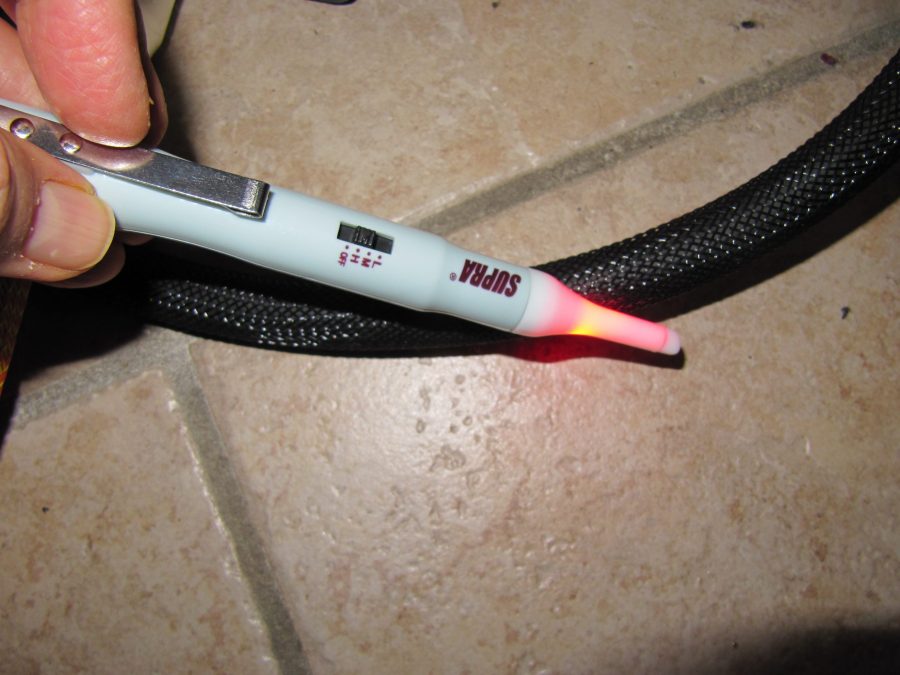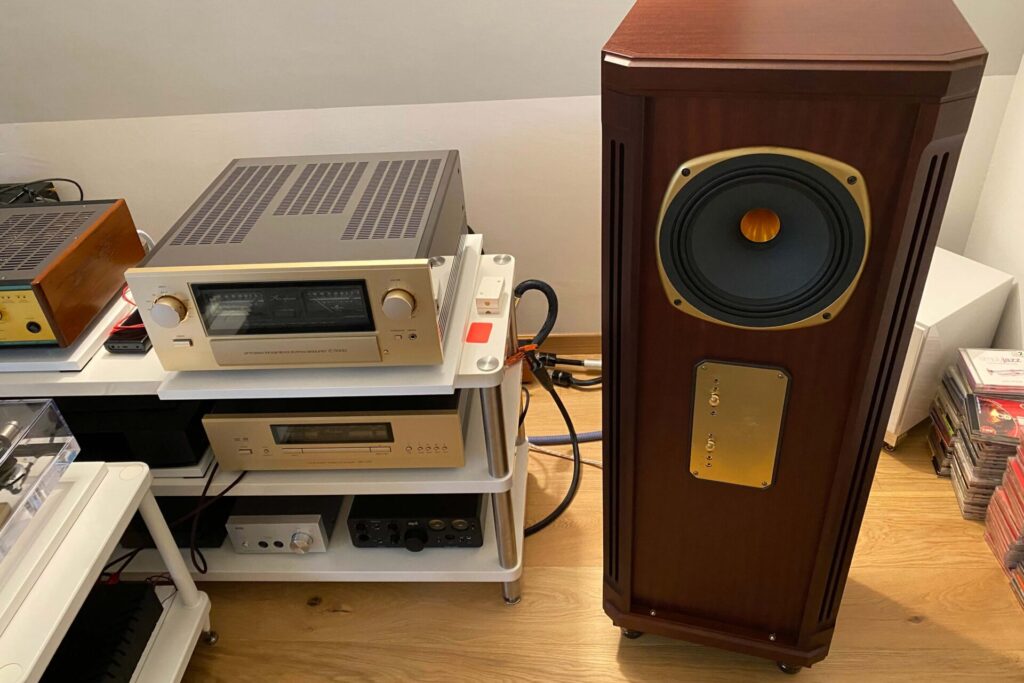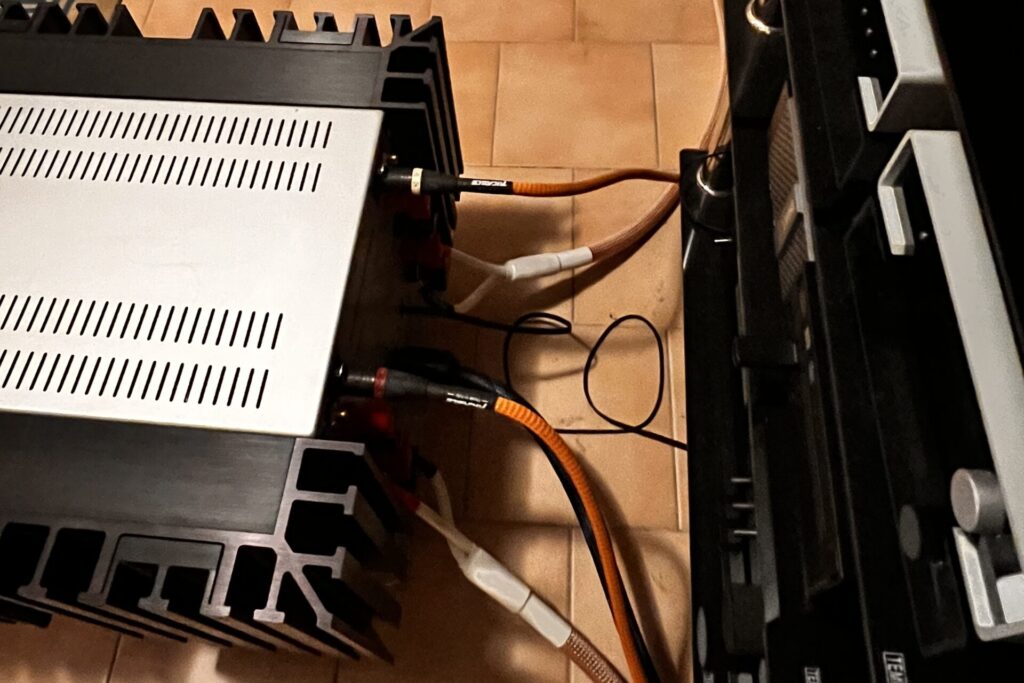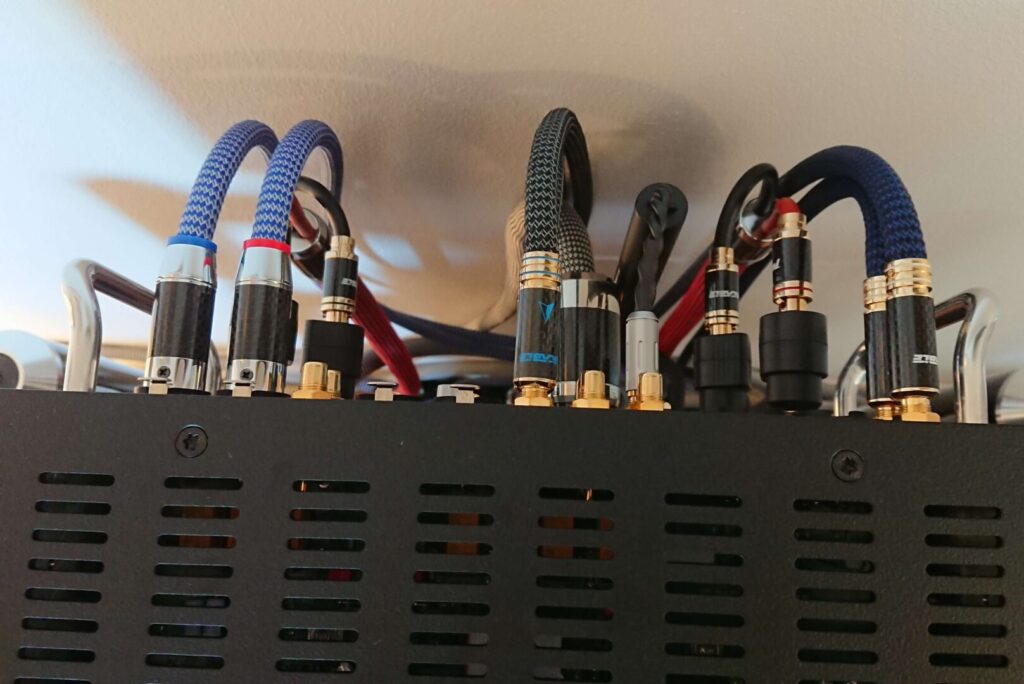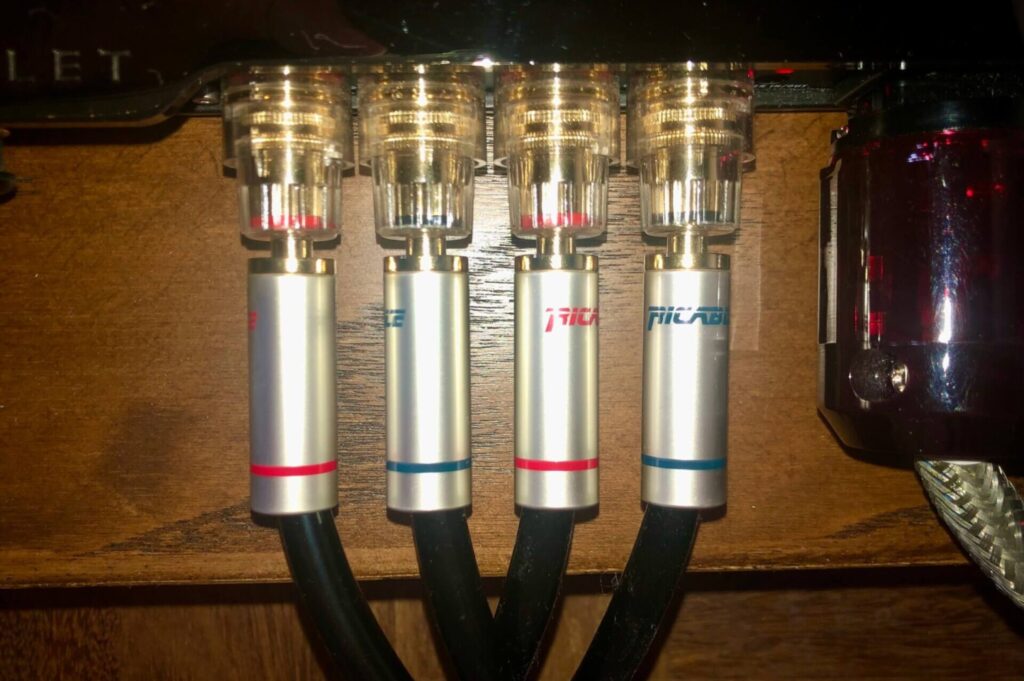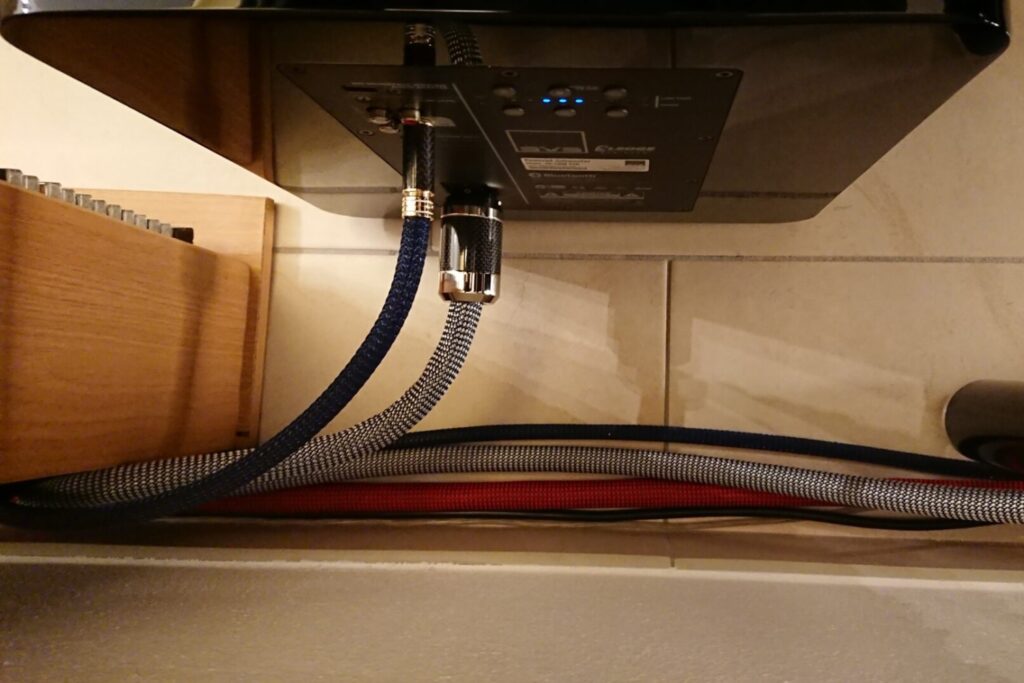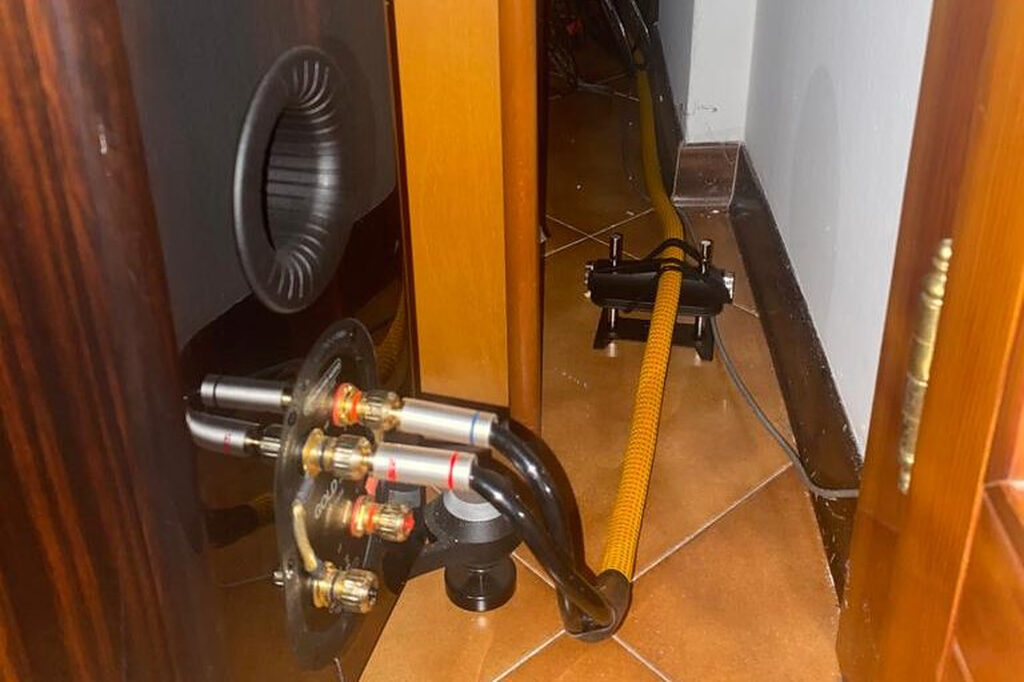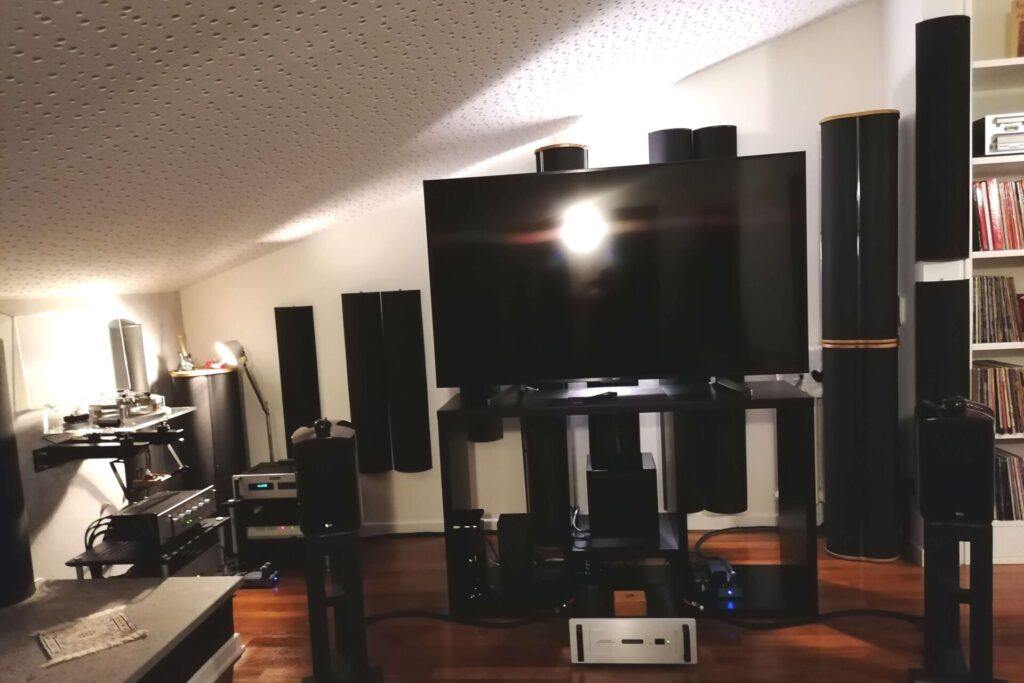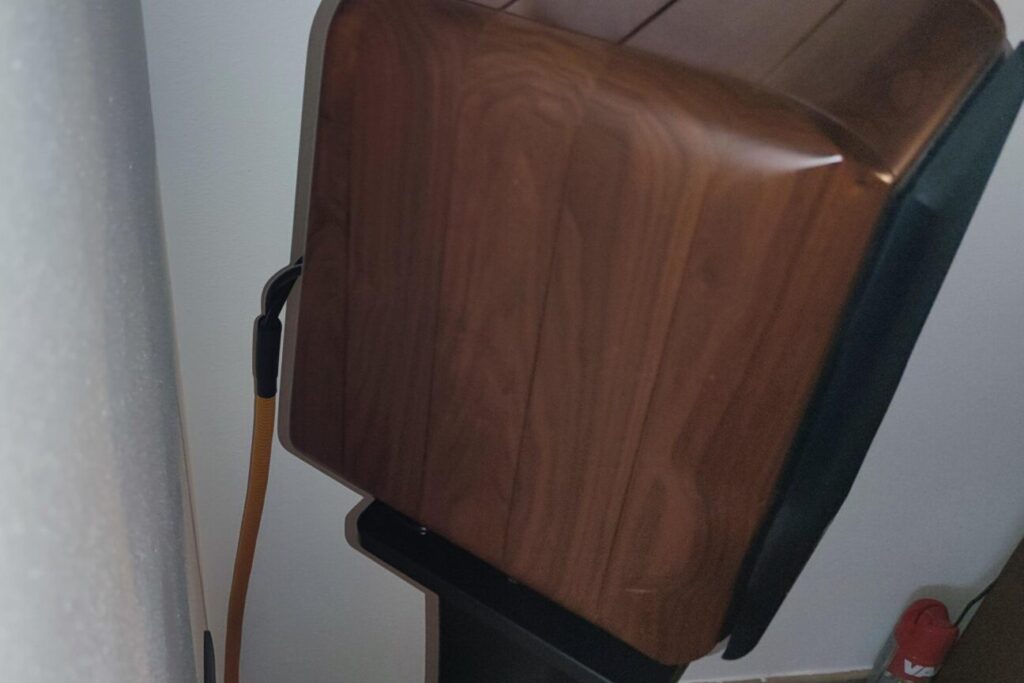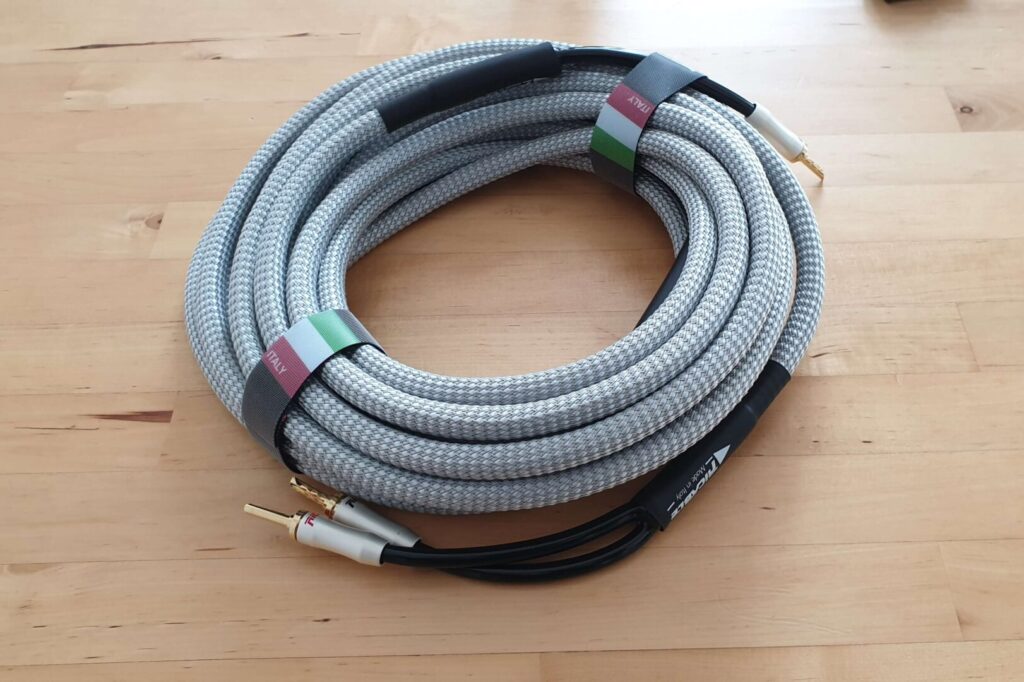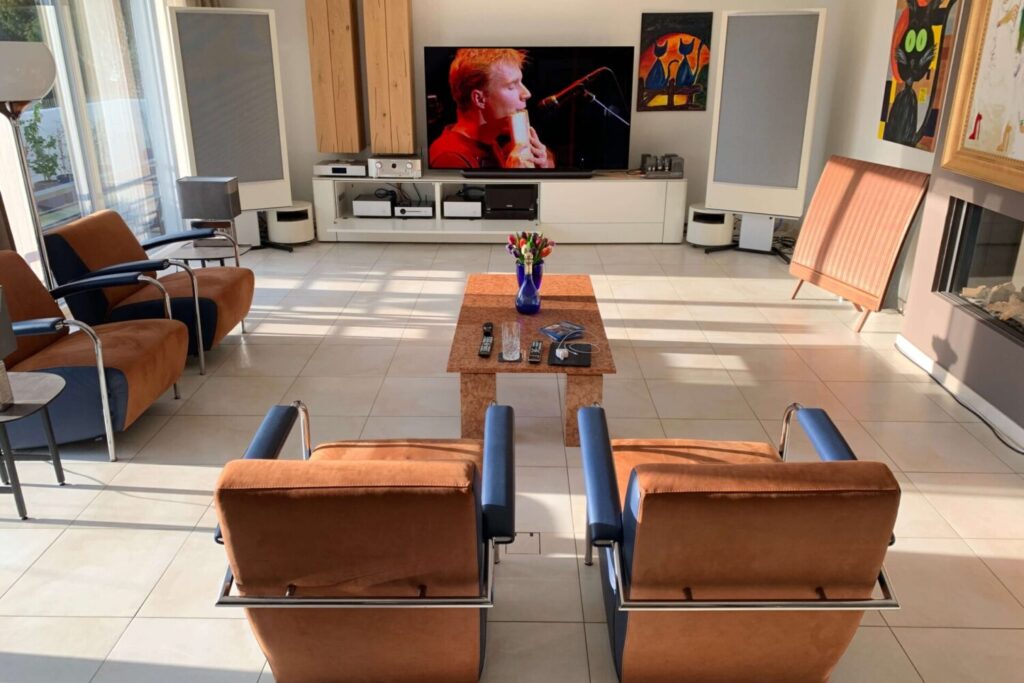There's no two without three, or maybe there's no three without four. Our affectionate customer Zanetti is back in the limelight with a new article in which he tells us about a series of tests and a test of the cables Ricable of a technical and scientific nature, with which he tested our series Dedalus and Invictus. For those who missed them, here are the links to the first e to the second instalmentfollowed by what was supposed to be his latest articleChristmas atmosphere. Fortunately, this was not the case. Happy reading with Mr Zanetti's story and his test of the cables Ricable!
The dance of electrons
So, in conclusion, I brought home from Mr Sergio: four power cables Dedalus, two balanced cables INTERCONNECT (one Invictus and one Dedalus), three HDMI cables and, last but not least, a pair of speaker cables Invictus.
Good for my ears, a little less so for my wallet. But you know, hobbies are hobbies. So my ears are satisfied, but is that really the case? I mean, from a technical and scientific point of view, will it be possible to objectively determine the quality of these cables?
"But what do you care?" my colleague and friend Alessandro tells me. "Why do you want to hammer your so-called if you are satisfied?". I think he's right! But... you know... appetite comes with eating! So I start to examine what I have. First of all I check whether the cable plugs Dedalus are screwed in properly; almost always yes. Sometimes I try to tighten them up a bit more.
These are the personal tastes of audiophiles who like to tinker.
Then, considering that the weight of the cable is considerable, I think about supporting it in the connections. But thinking and increasing the 'hammering', I say to myself: "But will the phase be correct?". I can easily determine the phase of the power socket with a phase finderbut will the phase of the equipment connected with the cable also be correct or not? Alessandro again: "What are you looking for? You sound like a nutcase... exactly".
But now the audiophile fever has taken over and I don't want to listen to reason. I search on the Internet and after several attempts I discover an Oehlbach power strip that has the possibility to connect in phase the equipment. Well, I buy it. Now I could be satisfied, but the "fever" won't let up.
I discover that there is also an accessory that facilitates the operation. I buy that too. Well, for a few days I was satisfied. To sum up: I checked the screws on the plugs and sockets, I supported the connections because of the heavy weight of the cable, I put the equipment in phase with the special toy; everything is ok.
A week goes by and the audiophile bug starts working again! "But" I say to myself, "from a strictly chemical-physical point of view, is it worth the money? I mean, is it a properly built cable?". Now my friend Alessandro gets really pissed off (and three)! I'll leave out the abuse he says. He will calm down later at home, listening to McIntosh and Sonus Faber. A few days go by and this time it is him who calls.
He tells me: 'I bought an accessory, a kind of pen, I strongly recommend you to buy it, trust me'. Damn it, he's fooled me, now he's feeding my audiophile bug! But first I enjoy the audio and video quality that comes out of the power strip. The power strip is sold without a cable and I plugged a normal one into it. It was fine. After a couple of days of fiddling with cables, I put a Dedalus Ricable into the power socket of the power strip and off I go.
In the evening, I switched on the TV (also connected to the power strip) and was amazed. I think: 'They have increased the intensity of the video signal, that's strange, I've never seen TV so well'. An hour goes by, but I'm not convinced. I look at the power strip and think: 'Did something change in the power supply? Of course, I have changed the cable! I don't believe it, so I put the normal electric cable back in and switch the TV on again. The quality has deteriorated.
But how is this possible! The cable is before the filter strip, how can this be? I change the cable again and the video quality increases! Try it for yourself! The cable Ricable which feeds the power strip has increased the video and audio quality considerably (picture 3).the video and audio quality (picture 3). Now I have to deal with this strange contraption that Alessandro advised me to buy sight unseen.
I go to Audioteka's website and read that the Swedish company SUPRA produces a small instrument to control the electric fields that can be radiated by power cables, power strips, fuses, electric distribution blocks and so on. "Minchia Mr. Lieutenant", I found what I was looking for! Now I'm going to fix Ricable ! I take the "pen", put it on the Dedalus. NOTHING!
It does not start and the buzzer does not sound. I try my black PCOCC cable: a disaster! The "pen" lights up and beeps. I try all the cables I have other than Ricable: they all sound and the "pen" always lights up! Now I am satisfied. These damn cables are a work of art. Whoever designed them should be awarded the Legion of Honour!
L.R. Zanetti
The 'pen' used is an electromagnetic field detector. In practice, when placed near a source of electromagnetic fields (such as electricity), the tip lights up. It is equipped with various sensitivities to intercept even the weakest electromagnetic fields. It is also an excellent tool for finding the phase of appliances, because where there is phase it lights up, where there is neutral it does not.
In the test, it is evident that our cables do not give off any electromagnetic fields at maximum sensitivity. This means that they are better shielded and isolated than others. These fields coming out of the cable interfere with electronics and other signals in the chain and this is also why a good Netzkabel makes the difference. Finally, we would like to thank Mr. Zanetti for the fourth time for this test of the Ricable cables, thanks to which the Dedalus and Invictus series were put under stress, but came out victorious.


